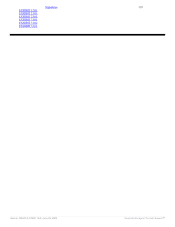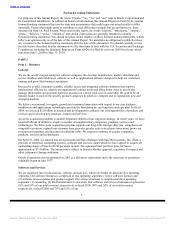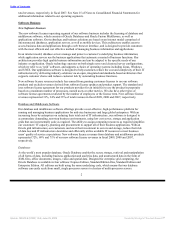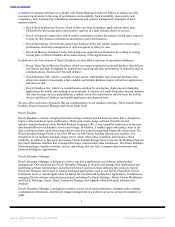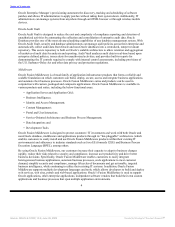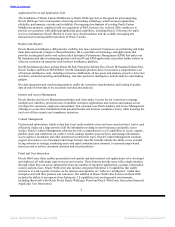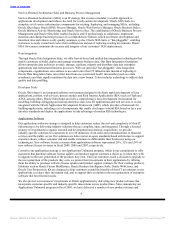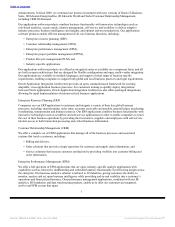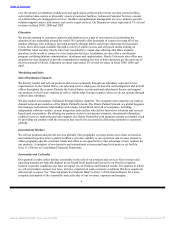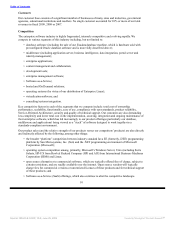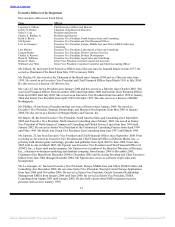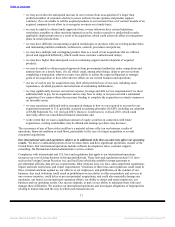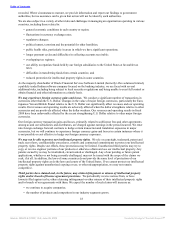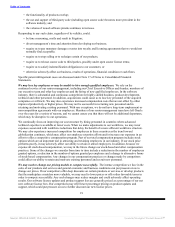Oracle 2008 Annual Report Download - page 15
Download and view the complete annual report
Please find page 15 of the 2008 Oracle annual report below. You can navigate through the pages in the report by either clicking on the pages listed below, or by using the keyword search tool below to find specific information within the annual report.
Table of Contents
Customers
Our customer base consists of a significant number of businesses of many sizes and industries, government
agencies, educational institutions and resellers. No single customer accounted for 10% or more of our total
revenues in fiscal 2009, 2008 or 2007.
Competition
The enterprise software industry is highly fragmented, intensely competitive and evolving rapidly. We
compete in various segments of this industry including, but not limited to:
• database software (including the sale of our Exadata database machine, which is hardware sold with
preconfigured Oracle database software and is more fully described above);
• middleware (including application server, business intelligence, data integration, portal server and
identity management);
• enterprise applications;
• content management and collaboration;
• development tools;
• enterprise management software;
• Software-as-a-Service;
• hosted and On Demand solutions;
• operating systems (by virtue of our distribution of Enterprise Linux);
• virtualization software; and
• consulting/systems integration.
Key competitive factors in each of the segments that we compete include: total cost of ownership,
performance, scalability, functionality, ease of use, compliance with open standards, product reliability,
Service-Oriented Architecture, security and quality of technical support. Our customers are also demanding
less complexity and lower total cost in the implementation, sourcing, integration and ongoing maintenance of
their enterprise software, which has led increasingly to our product offerings (particularly our database,
middleware and applications) being viewed as a “stack” of software designed to work together in a
standards-compliant environment.
Our product sales (and the relative strength of our products versus our competitors’ products) are also directly
and indirectly affected by the following, among other things:
• the broader “platform” competition between industry standard Java EE (formerly, J2EE) programming
platform by Sun Microsystems, Inc. (Sun) and the .NET programming environment of Microsoft
Corporation (Microsoft);
• operating system competition among, primarily, Microsoft’s Windows Server, Unix (including Sun’s
Solaris, HP-UX from Hewlett Packard Company (HP) and AIX from International Business Machines
Corporation (IBM)) and Linux;
• open source alternatives to commercial software, which are typically offered free of charge, subject to
certain restrictions, and are readily available over the internet. Open source vendors will typically
charge fees for commercial versions or unrestricted licenses of these products and for technical support
of these products; and
• Software-as-a-Service (SaaS) offerings, which also continue to alter the competitive landscape.
10
Source: ORACLE CORP, 10-K, June 29, 2009 Powered by Morningstar® Document Research℠


